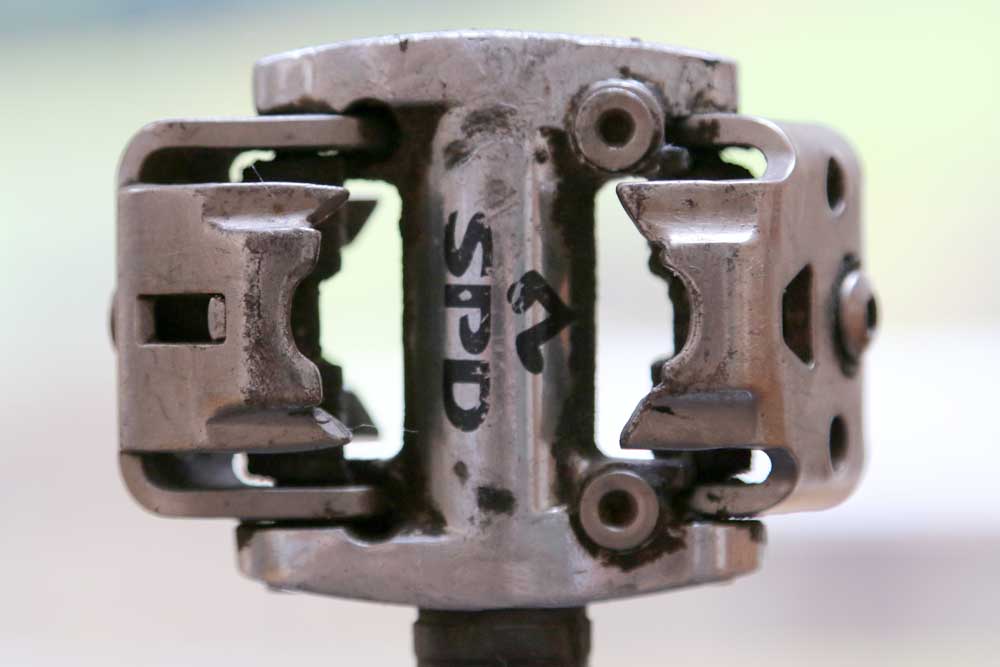Mountain biking was better in the old days... mostly
We remember when all this was fields. Fields with race tape around it and handlebars narrower than lollipops. But what were the best bits of 90s MTB?
>>> “They’re rubbish, but they’re iconic!” – explaining the retro bike obsession
1. Wanting some RockShox Judys

Rock Shox Judy
Suspension really became a thing for mountain bikes in the 1990s, and the cream of the crop was undoubtedly the RockShox Judy. If you were a cross-country rider you wanted the yellow ones, and the red ones were a badge of honour for downhillers. These days the tiny amount of travel and flex of the design is laughable, but back then they were something else. Also great was the large RockShox sticker you got with them, which you were too proud of to actually stick anywhere. It’s still in a drawer somewhere.
2. Making sure your anodised parts matched

One 1990s trend that hasn’t really make a comeback [outside of UK companies like Hope and Burgtec anyway] is coloured anodised parts. Plastering your bike with after-market trinkets was the ultimate way to say ‘this bike is mine’. Bright purple skewers, bottle cage bolts, seatpost, stem, handlebars and possibly even a blue anodised aluminium beer bottle opener shaped like a shark, for when you want to crack open a brew out on the trail. Awesome. Well, until the anodising started to rub off.
>>> Would you take our £100 cheap-bike challenge?
3. John Tomac was the king
The Tomes was indeed The Man when it came to 90s mtb style. Peaked helmet, Tioga disc wheel, Magura Race Line brakes, suspension… Not only did the American super-hero of cycling look good, but he rode good too. He even managed to make cross-country racing look cool. That’s how amazing he was.
4. Even downhillers had bar ends
Before bar ends became something of a naff kidney destroyer, they were everywhere. Long ones, short ones, ones built in to your bars so you couldn’t get rid of them. Even downhill racers had bar ends – which probably says more about the downhill courses of the time than anything else. When riser bars came in you were not allowed – by mtb law – to have bar ends with them, so into the crate of doom in the garage they went. Somehow, we all still managed to ride up hills without them.
5. You had Panaracer Smoke and Dart tyres
If there was an industry standard for off-road tyres, then Panaracer’s Smoke (at the back) and Dart (at the front) tyres were it. Sure, there were a few pretenders – Tioga Psychos anyone? – but you knew that if you saw those familiar tread patterns imprinted into a muddy trail, that there was a proper mountain biker up ahead.
6. Wearing tight Lycra was ok
If there’s one thing that really dates old photos of 90s mountain bikers in action, it’s the clothing. Tight Lycra gear in all manner of splishy-splashy lurid colours seemed perfectly acceptable for a time, before we all came to our senses and ditched the figure-hugging clobber for something less scary to small children and animals.
7. Hydraulic brakes meant Magura
‘Strong enough to crush a weak rim’ they used to say, and you’d better believe it. Magura’s hydraulic rim brakes found favour with anyone who wanted the ultimate stopping power in a time before disc brakes and disc brake frame mounts. Braking power was pretty good, even by today’s standards, although pulling on the levers hard made your forks and seat stays flex outwards in an alarming manner.
8. Getting some of those fancy SPD pedals

It took a while to progress beyond clips-and-straps, but there’s only so long you can wear a pair of old trainers without looking serious. Shimano’s SPD clipless pedals because pretty ubiquitous by the end of the 90s, and it is a testament to the system that it remains largely unchanged to his day. Thankfully, there are now shoes that don’t look like mutant football boots to wear with them too.
9. Not being afraid to make your own mtb inventions
You got kudos rather than outright ridicule back in the 90s for coming up with your own solutions to mtb problems. Before the age of the Crud Catcher, there was nothing wrong with cutting a Robinson’s squash bottle in half and zip-tying it to the underside of your down tube. As long as you scrubbed the label off the bottle first. Old inner tube? Cut bits off it and use them to cover your one-inch threaded headset to stop the water getting in.
10. Riding at night meant riding in the dark

LEDs were the red lights that went up and down on your stereo when you cranked up the volume, not a means by which to see the trails at night. Now super-bright LED lights are cheap, easily available and well made, but back in the 1990s you were lucky to have 10 watts of urine-yellow halogen power at your disposal… for around half an hour, when the 2kg lead acid battery ran out of juice and required 24 hours of trickle charging.
11. Body armour – what’s that?
It wasn’t uncommon to see downhill racers in just shorts, short-sleeve top and an open-face helmet. If you came off, you were going to hurt yourself. Hammer pads were the first popular ‘armour’ for riders, if you could find them in an actual real shop, but they offered little in the way of protection beyond stopping you from getting grazed.
12. You used a map to find your way around
There was a time before trail centres. And before Strava segments. And before Garmins. It’s hard to believe but we used to head out with a tattered map stuffed in our bumbags and see what was out there. Imagine that eh? That would never catch nowadays would it?



